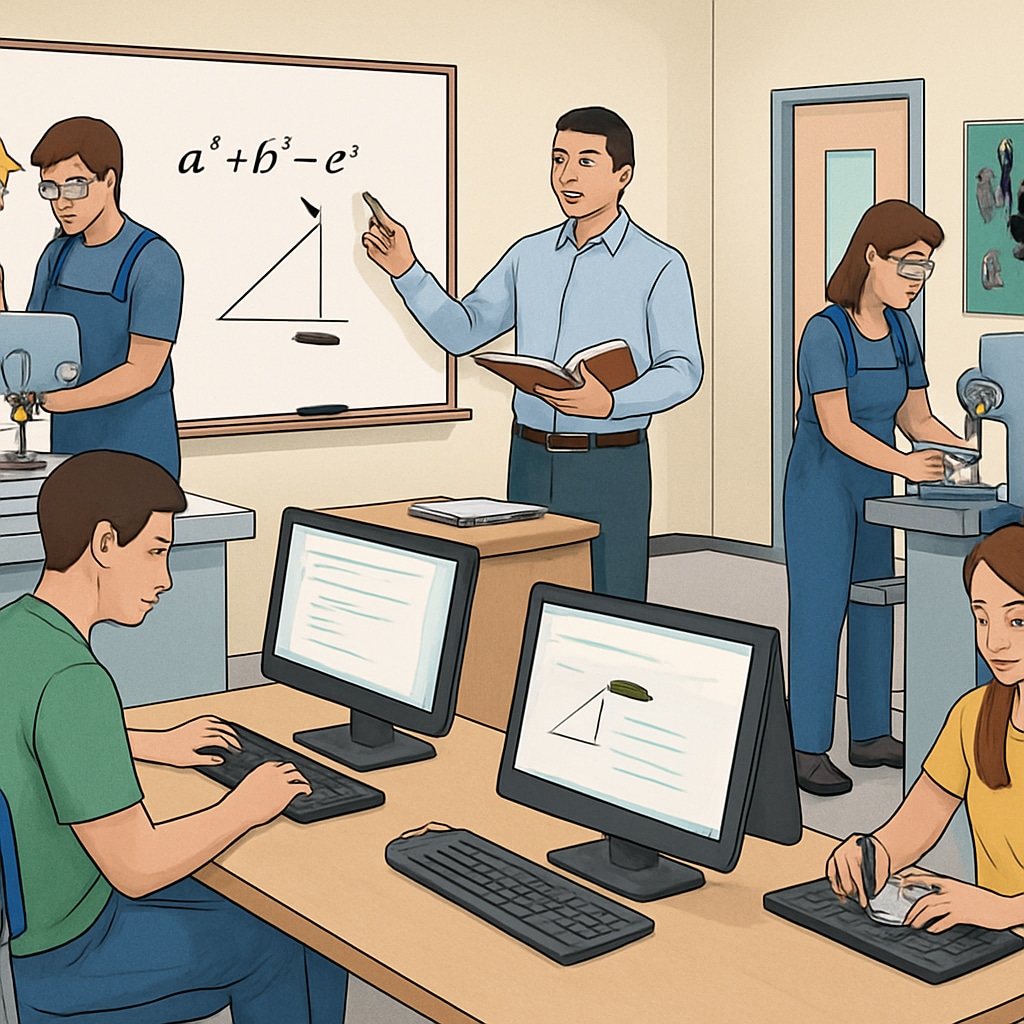In today’s K-12 education landscape, achieving a balance between vocational education, academic disciplines, and a cohesive educational structure has become a pressing challenge. As schools strive to prepare students for both practical career opportunities and intellectual pursuits, the integration of these two educational domains is essential. This article examines the complementary relationship between vocational education and traditional academics, reviews implementation models in various school districts, and proposes actionable strategies for creating a unified curriculum to cultivate well-rounded students.
Understanding the Need for Vocational and Academic Integration
Vocational education focuses on equipping students with practical skills for specific trades and careers, while traditional academics emphasize critical thinking, theoretical knowledge, and intellectual growth. Historically, these two educational paths have been viewed as separate, even competing, approaches. However, the modern workforce demands a blend of technical expertise and soft skills, such as communication and problem-solving.
For example, a student pursuing a career in engineering benefits from both hands-on technical training and advanced mathematics courses. Similarly, culinary arts students who understand business fundamentals are better prepared to run their own establishments. This overlap highlights the potential for integration, not only to broaden career prospects but also to foster lifelong learning.

Successful Models of Educational Balance
Across the globe, innovative educational models have emerged to integrate vocational and academic learning. For instance, Germany’s dual education system pairs classroom instruction with apprenticeships, allowing students to alternate between theoretical studies and real-world application. This model has proven effective in aligning education with labor market needs, while also fostering academic growth.
In the United States, career and technical education (CTE) programs have gained traction in high schools. These programs often integrate vocational training with core subjects such as math, science, and English, ensuring that students acquire a comprehensive education. For example, a CTE course in health sciences might combine biology lessons with clinical practice, preparing students for careers in healthcare.
Such models demonstrate that vocational and academic education are not mutually exclusive but can be effectively combined to create a holistic learning experience.

Strategies for Building a Unified Curriculum
To achieve an effective balance between vocational and academic education, schools and educators can adopt the following strategies:
- Curriculum Integration: Design interdisciplinary courses that combine vocational skills with academic content. For example, a course in digital media might integrate graphic design (vocational) with writing and storytelling (academic).
- Project-Based Learning: Encourage students to work on projects that require both technical skills and academic knowledge, such as creating a business plan for a startup or designing an energy-efficient home.
- Industry Partnerships: Collaborate with local businesses and industries to provide internships and apprenticeships that complement classroom learning.
- Teacher Collaboration: Facilitate teamwork between vocational and academic instructors to align their teaching objectives and create cohesive lesson plans.
- Assessment Redesign: Develop evaluation methods that measure both practical skills and academic competencies, such as portfolio assessments or capstone projects.
Implementing these strategies requires a shift in mindset, as well as support from policymakers, educators, and parents. However, the benefits—ranging from improved student engagement to enhanced career readiness—make it a worthwhile investment.
Challenges and Opportunities
Despite its advantages, integrating vocational and academic education presents several challenges. These include limited funding, teacher training gaps, and resistance to change from stakeholders accustomed to traditional education models. Addressing these issues requires a collaborative approach, including advocacy for increased funding, professional development programs for educators, and community engagement to build support for integrated curricula.
On the other hand, the opportunities are immense. By bridging the gap between vocational and academic education, schools can provide students with a more relevant and engaging learning experience. As a result, students are better prepared to navigate the complexities of the modern world, whether they choose to enter the workforce immediately or pursue higher education.
Conclusion
Balancing vocational education, academic disciplines, and a cohesive educational structure is not just a theoretical ideal but a practical necessity in today’s rapidly changing world. By leveraging the complementary strengths of these two educational approaches, schools can cultivate well-rounded individuals who are equipped with the skills, knowledge, and adaptability needed for success. As educators and policymakers continue to explore integration strategies, the ultimate goal remains clear: to empower students to thrive in both their personal and professional lives.
Readability guidance: This article maintains a balance between technical detail and accessibility, using short paragraphs, clear headings, and concise sentences. The suggested strategies are presented in a list for clarity, and the overall structure encourages easy navigation for readers.


